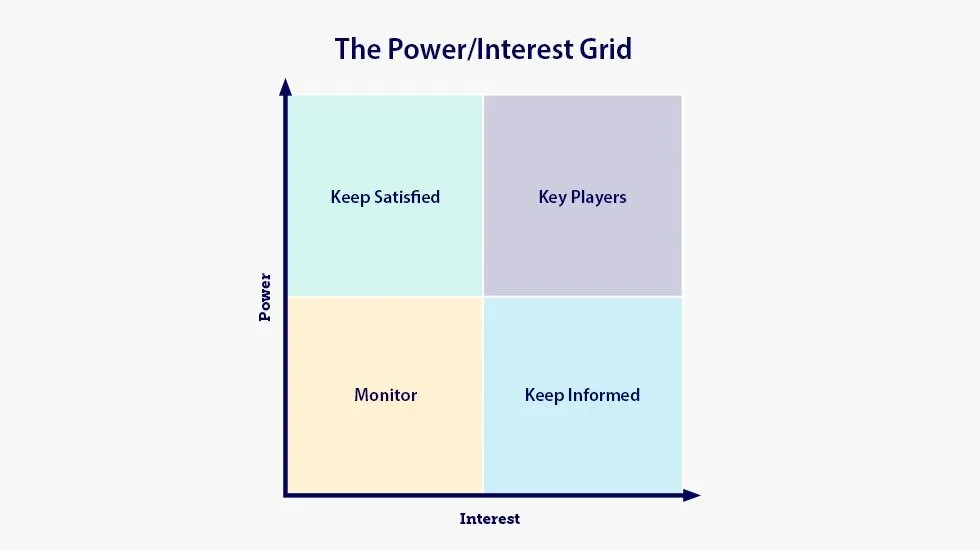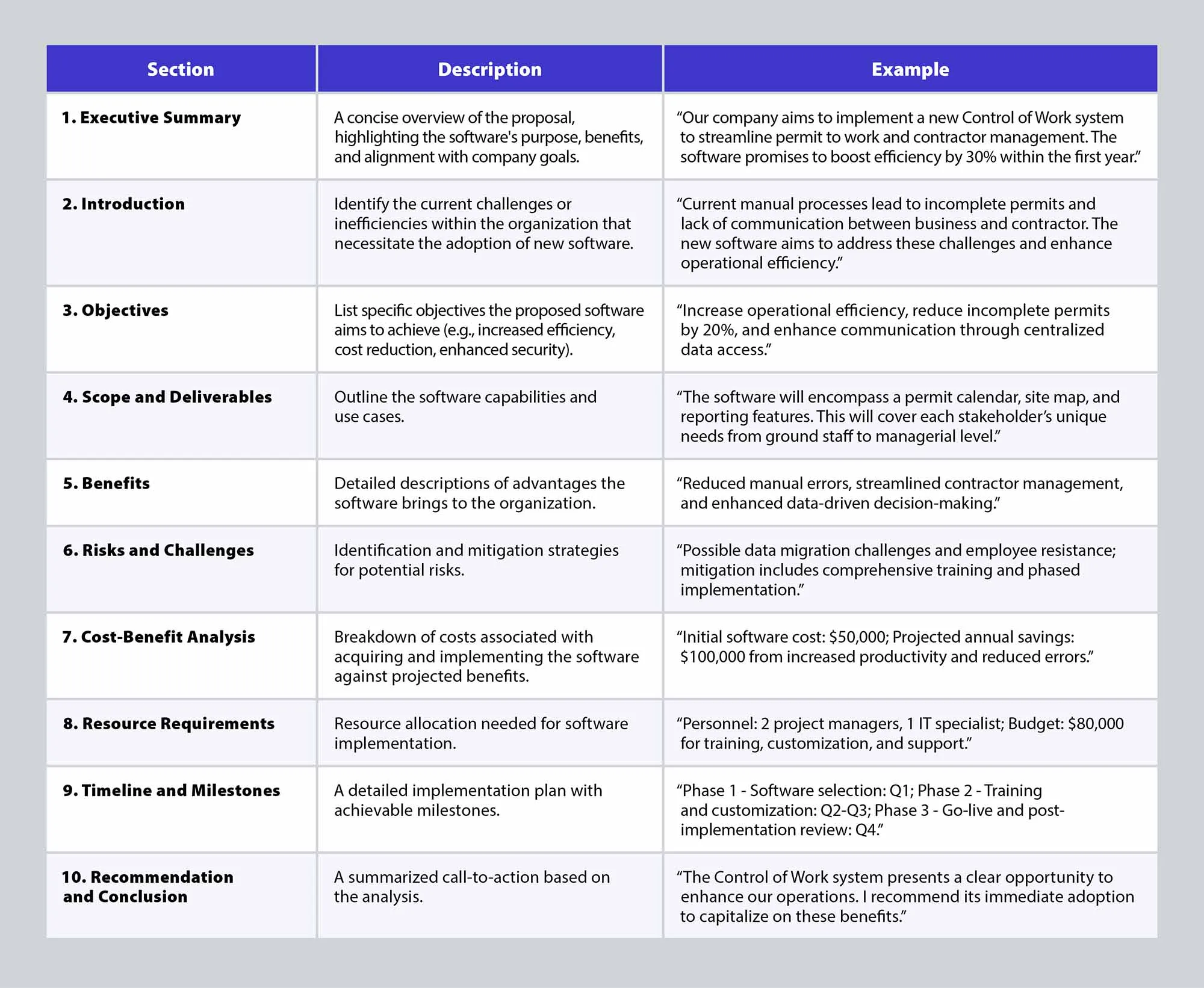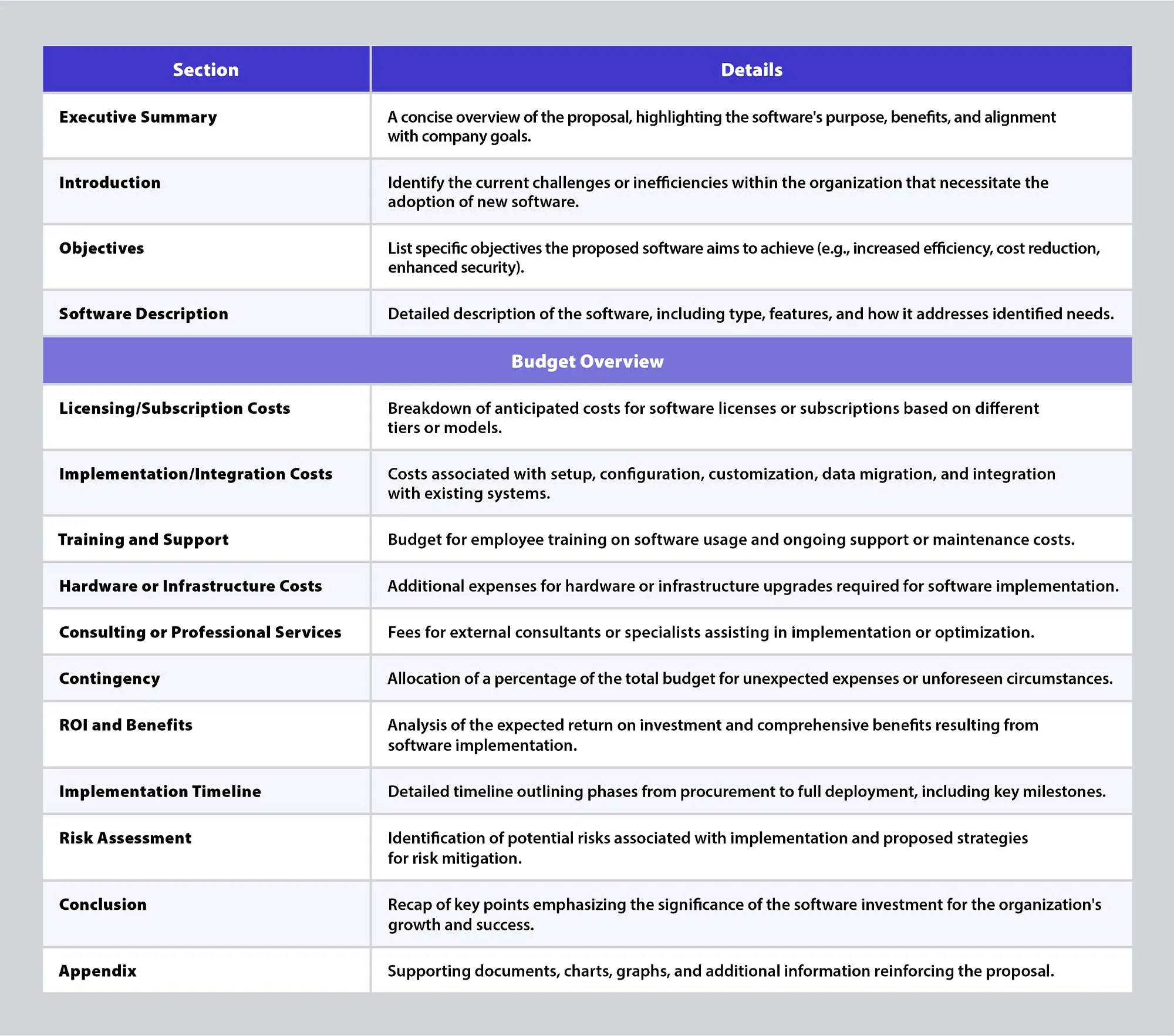In the current era of digital transformation, making the right software investment can be a game-changer for your business. However, the journey to acquiring and successfully implementing a new software solution begins long before the actual purchase – it starts with building and maintaining stakeholder buy-in.
We interviewed several of our customers about their biggest internal challenges in the software procurement and implementation process. Combining their feedback with our own experience working with businesses like yours, we’ve developed this set of best practices to help address the most common roadblocks to successful adoption and implementation.
In this guide, you’ll discover key strategies to ensure your stakeholders are not just on board, but genuinely enthusiastic about the software purchasing and implementation process. We hope to provide you with actionable steps and insightful approaches to navigate challenges, foster stakeholder engagement, and align diverse interests toward a unified vision of workplace safety excellence.
#1 Lack of Stakeholder Engagement
In our interviews and interactions over the years, our customers often say that lack of stakeholder engagement can easily undermine a software purchasing process before it can get very far. One reason this happens is that the internal champion (a person leading the charge to get EHS software) has not fully identified and engaged all affected stakeholders early enough in the process, or sufficiently engaged them in the decision-making process. But how do you get started with identifying the most important stakeholders and setting a place for them at the table?
Understanding the Stakeholders Perspective: Stakeholder Analysis
Identify key stakeholders within your department and across the organization who will be impacted by implementation of the new software. From the strategic influence wielded by executives to the functional insights of department heads and the technical considerations of IT personnel, each stakeholder group holds distinct concerns, perspectives, priorities, and roles in the procurement process.
Creating a Power/Interest Grid could be a good place to start. This grid is a powerful tool used in stakeholder analysis to classify stakeholders based on levels of power and their level of interest in a particular project, decision, or initiative. Similar to a materiality matrix, the grid helps in understanding and prioritizing stakeholders based on their influence and involvement in the decision-making process.
Applying & Interpreting the Power/Interest Grid
The Power/Interest Grid features four quadrants that will help you to broadly categorize your stakeholders. These include:
- High Power, High Interest (Key Players): Stakeholders in this quadrant have both significant power and a high level of interest in the software purchasing process. Engaging with these individuals and addressing their interests is crucial for building buy-in as they have the greatest need for the software, as well as the greatest influence over other stakeholder groups.
- High Power, Low Interest (Keep Satisfied): Stakeholders here might hold significant power but have a lower interest in the software implementation specifics. They should be kept informed, and their interests addressed to prevent potential negative influence.
- Low Power, High Interest (Keep Informed): Stakeholders in this quadrant have lower power and influence but a high level of interest in the software purchasing process. These stakeholders need to be kept adequately informed to secure their buy-in. Their insights and perspectives can be valuable to the process, even if they lack direct decision-making authority.
- Low Power, Low Interest (Monitor): Stakeholders in this quadrant might not significantly impact the project and might not require extensive engagement. However, it’s essential to monitor their sentiments and involvement, as their opinions could change over time, and they also still have some degree of influence in the purchasing and subsequent implementation processes.

Adapted from Mendelow’s Matrix
Click here to download your own Power/Interest Grid.
#2 Loss of Champion
Your champions are indispensable assets in building and sustaining momentum toward a successful software implementation. Conversely, their departure can pose a significant risk to the continuity of the procurement process. If a champion leaves the company, they take with them not only their knowledge of the software but also the enthusiasm and momentum built around its adoption. This potential disruption can stall progress and jeopardize the success of the entire project.
To pre-emptively address this vulnerability, it’s imperative for organizations to anticipate the possibility of a champion exiting the organization and develop contingencies accordingly. Internal champions should proactively engage other crucial stakeholders in the software purchasing journey, ensuring that the knowledge and enthusiasm for the project are not concentrated in one person but are shared collectively. This approach to stakeholder engagement not only distributes the responsibility and ownership for the success of the project, but also establishes a network of individuals with a vested interest in the software’s success who can act interchangeably in the event a champion is lost.
In response to this potential challenge, organizations can implement the following measures:
- Succession Planning: Develop a well-defined succession plan within the purchasing and implementation team, identifying and positioning individuals who are capable of seamlessly assuming the role of champion if needed.
- Knowledge Dissemination: Facilitate regular knowledge-sharing sessions among team members to disseminate insights and understanding about the software across the organization.
- Cross-Functional Collaboration: Promote the formation of cross-functional teams and encourage collaboration and a sense of collective ownership of the software adoption initiative.
By openly addressing the risks posed by the departure of a champion, organizations can fortify their software procurement strategy, ensuring resilience and continuity even in the face of personnel changes.
#3 Weak Business Case
A strong business case serves to strategically support the rationale behind an investment; detailing the expected benefits, cost analysis, and potential returns. In the context of a software purchase and implementation, it becomes evident that many failures stem from the absence of a robust business case that communicates the right benefits to the right people, in the right language.
Building a Strong Business Case
To address this issue, it is crucial to truly embrace the idea that successful procurement hinges on the establishment of a compelling business case. By developing and sharing a comprehensive business case with your stakeholders, you’ll be able to align your stakeholders behind the common goal of software implementation and provide a clear understanding of how the proposed software purchase aligns with the organization’s procurement goals and objectives.
Moreover, the business case plays a vital role in the decision-making process by highlighting how the new software solves existing challenges or inefficiencies and addresses business needs. It substantiates the need for the investment, offering a solid foundation for justifying budget allocation and resource utilization. Ultimately, a well-structured business case should be a tool for persuading and facilitating consensus among stakeholders, ensuring transparency, and laying the groundwork for successful software adoption and integration.
Business Case Template
A strong business case, regardless of the underlying investment, should address several essential elements. Using a template can give you a solid framework for your business case and make it as clear as possible. The chart below provides an example specifically related to procurement of Control of Work software.

Click here to download your own Business Case Template.
#4 Budget Constraints
Budget constraints can significantly hamper, if not totally derail the software procurement process. It’s crucial to strike a balance between meeting business objectives and staying within the allocated budget. This necessitates early planning, thorough research, and effective communication throughout the process.
A software budget proposal serves as a comprehensive plan and financial blueprint outlining the resources required for the acquisition, implementation, and utilization of new software within an organization. This strategic planning approach enhances the likelihood of securing necessary approvals and resources for the successful execution of the software procurement project.
Initiating a software budget proposal as early as possible in the fiscal year is imperative. This is commonly the time of year when budgets are being created and a proactive approach prevents the company from reaching the end of the year and hastily putting together a proposal, scrambling for buy-in at the last second. Early budget planning allows for a comprehensive and well-thought-out document, ensuring that the necessity, benefits, costs, and strategic implications of introducing or upgrading software systems are thoroughly articulated.
The chart below provides an example of a software budget proposal:

Click here to download your own Software Budget Proposal Template.
Final Thoughts
It’s vital to remember that stakeholder buy-in is not just about getting approvals; it’s about building a shared vision for how the software will enhance the company’s performance and achieve common objectives. By fostering open communication, addressing concerns proactively, and demonstrating a commitment to the project’s success, you can gain the backing of stakeholders and pave the way for a smoother software procurement and implementation process.
You’ve absorbed quite a bit of information in this guide, so to help you digest it all, here are the key takeaways:
Prioritize Stakeholder Engagement through Analysis:
• Identify stakeholders’ power and interest levels using the Power/Interest Grid to evaluate priority for engagement.
• Create a collaborative template based on this grid to empower stakeholders in mapping their positions.
• Engage key players, keep influential yet less interested parties satisfied, inform interested stakeholders, and monitor those with low power and interest.
Cultivate and Retain Champions:
• Identify influential champions who understand the software’s benefits and leverage their advocacy.
• Continuously reassess engagement of champions and potentially seek new champions to maintain project continuity and momentum.
• Engage senior management to obtain vital resources and support for the project.
Develop a Robust Business Case and Software Budget Proposal:
• Create a compelling business case highlighting the rationale, benefits, costs, and returns of the software investment.
• Outline a comprehensive software budget proposal aligning with company goals and financial constraints.
• Identify current organizational challenges that necessitate new software and specify objectives like increased efficiency or enhanced security.
Let VelocityEHS Help!
VelocityEHS has a wide range of innovative software solutions and built-in expertise to meet your toughest challenges. Talk to one of our experts and discover how software can help make it easier for you to manage, maintain, and ensure long-term success.
